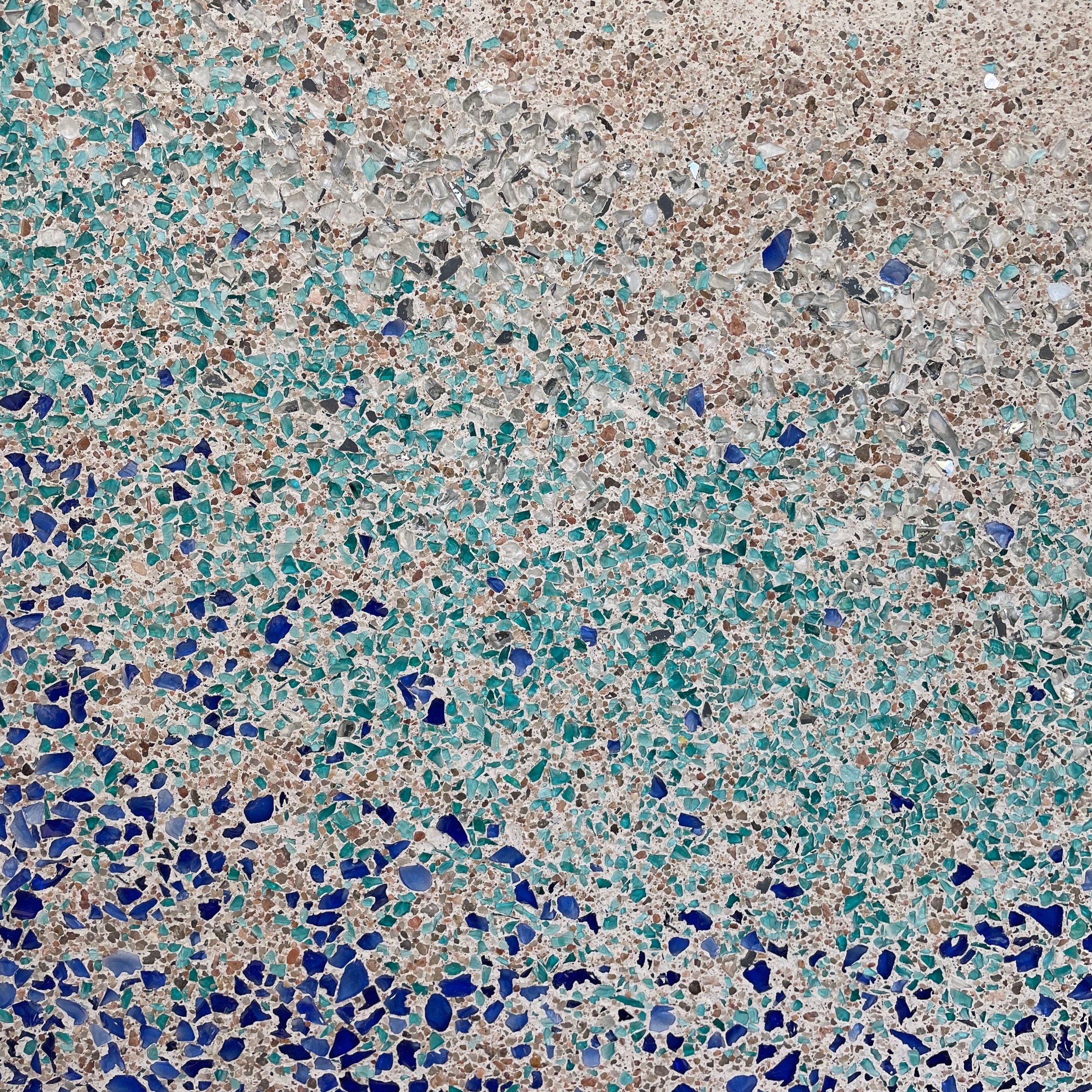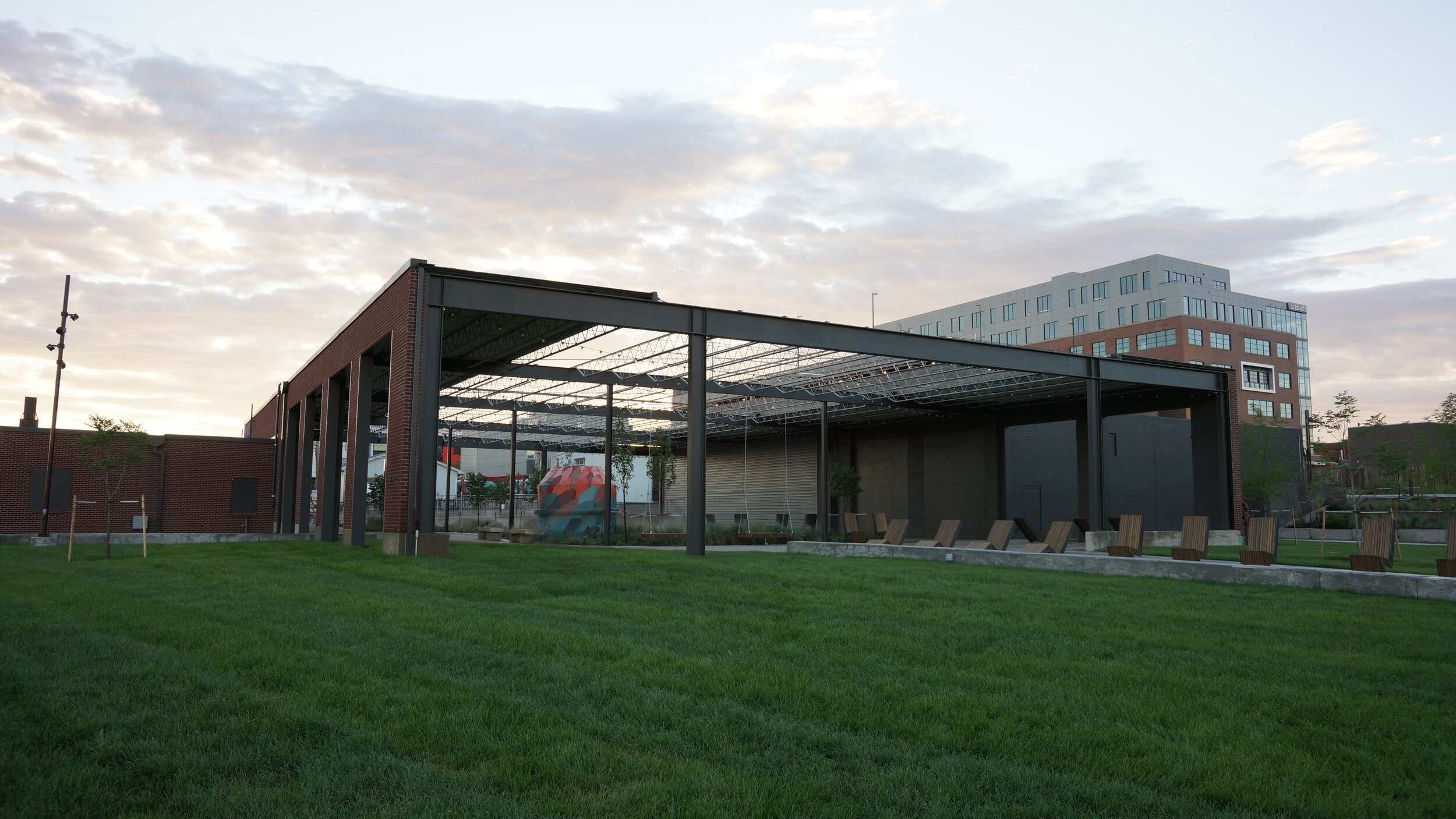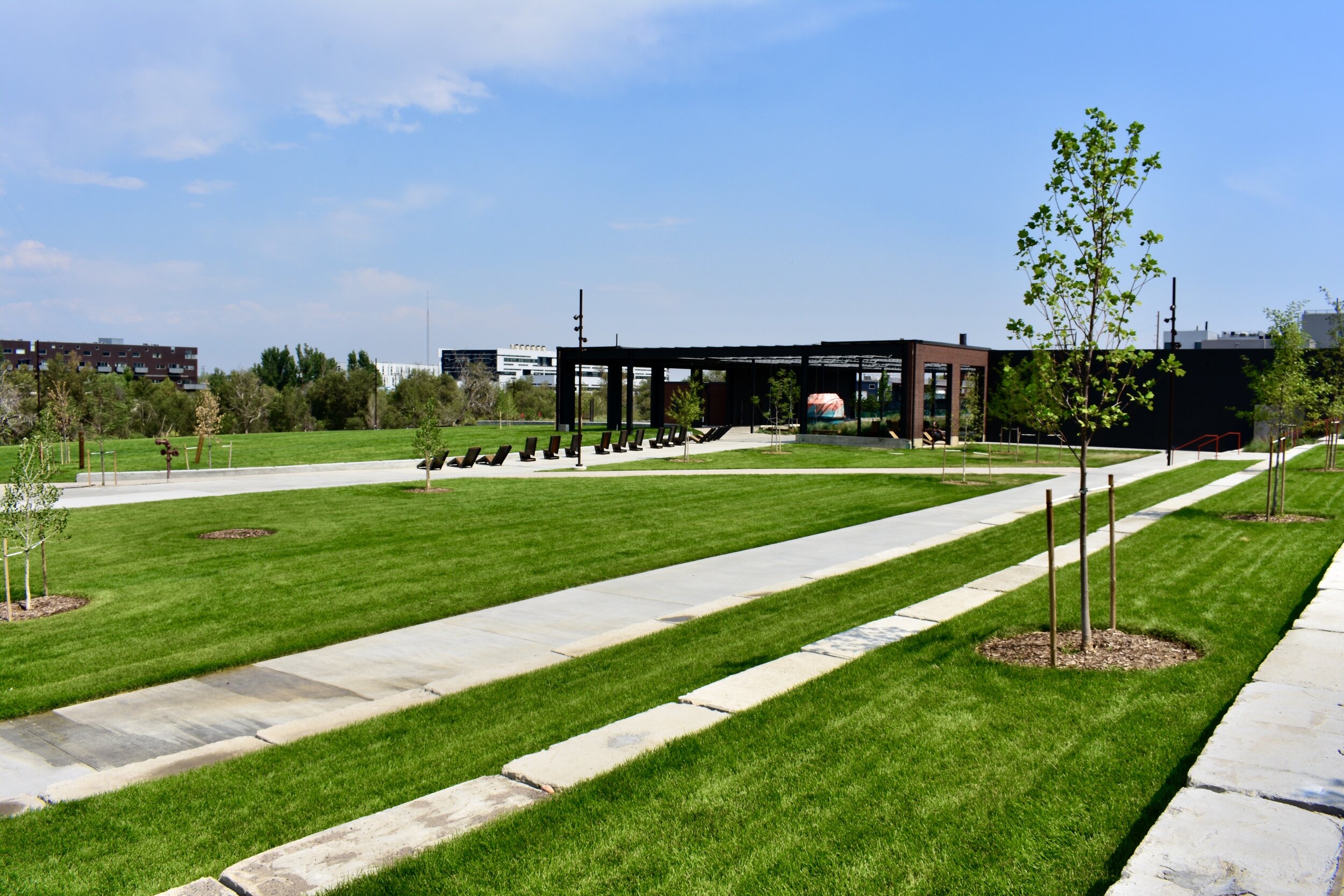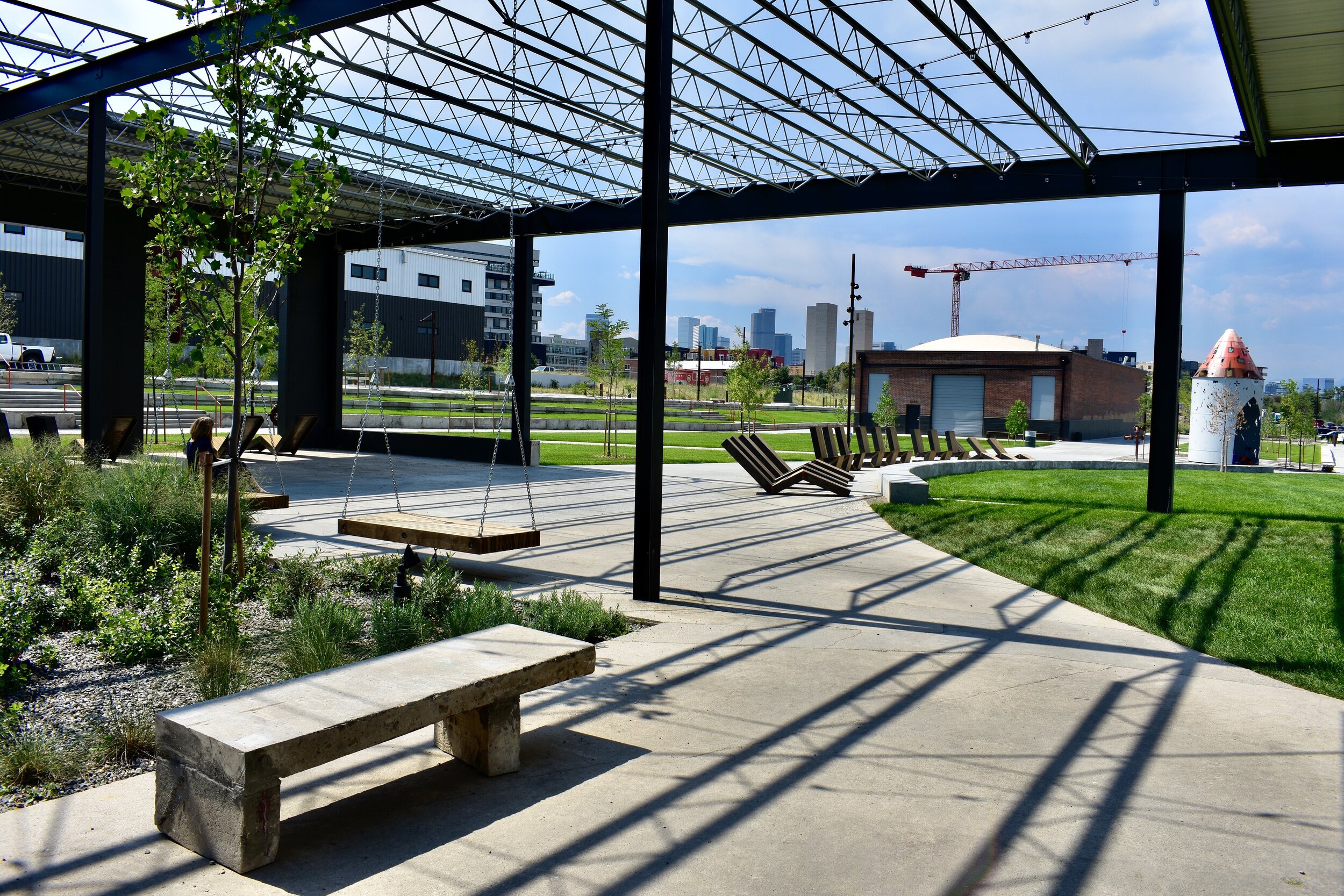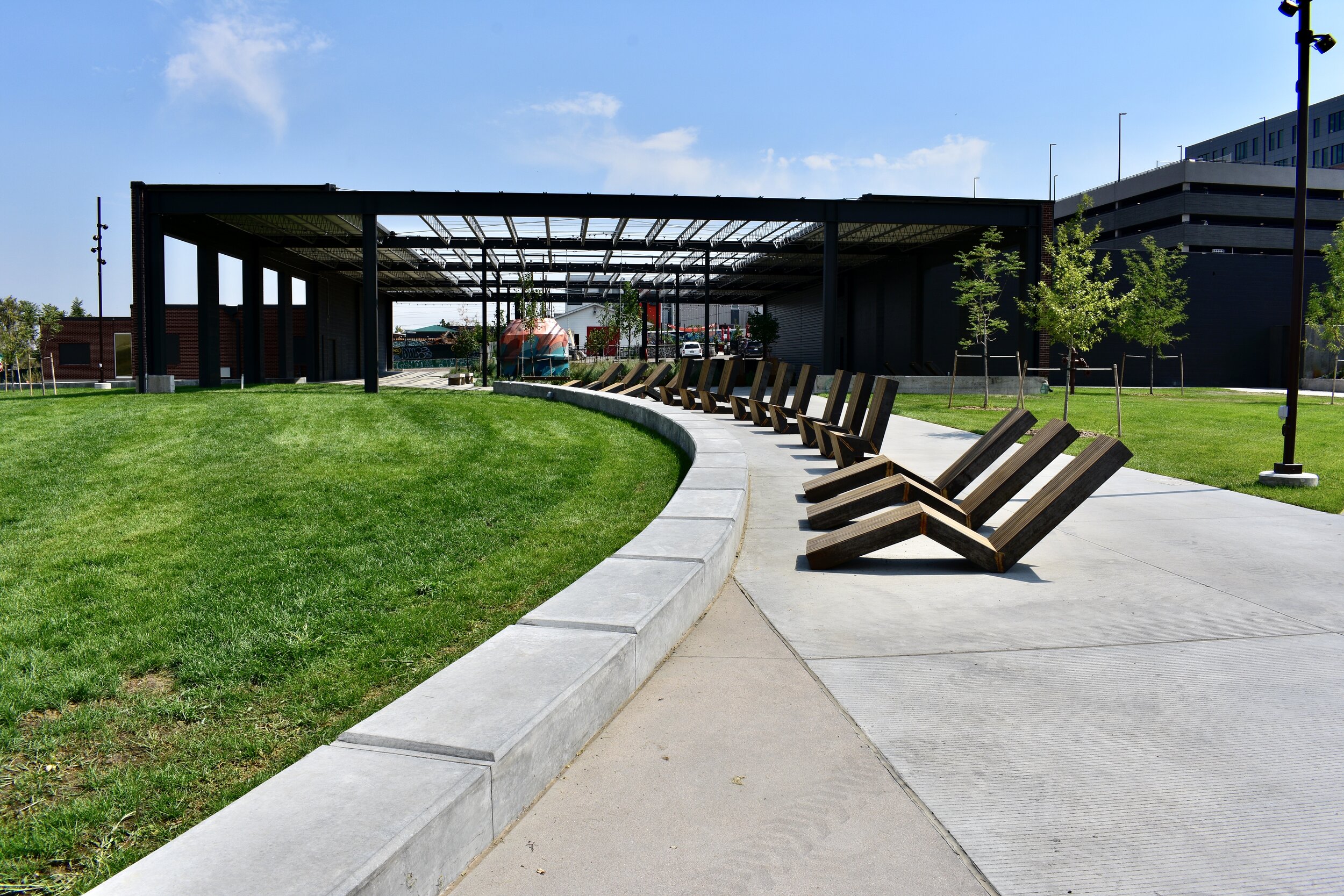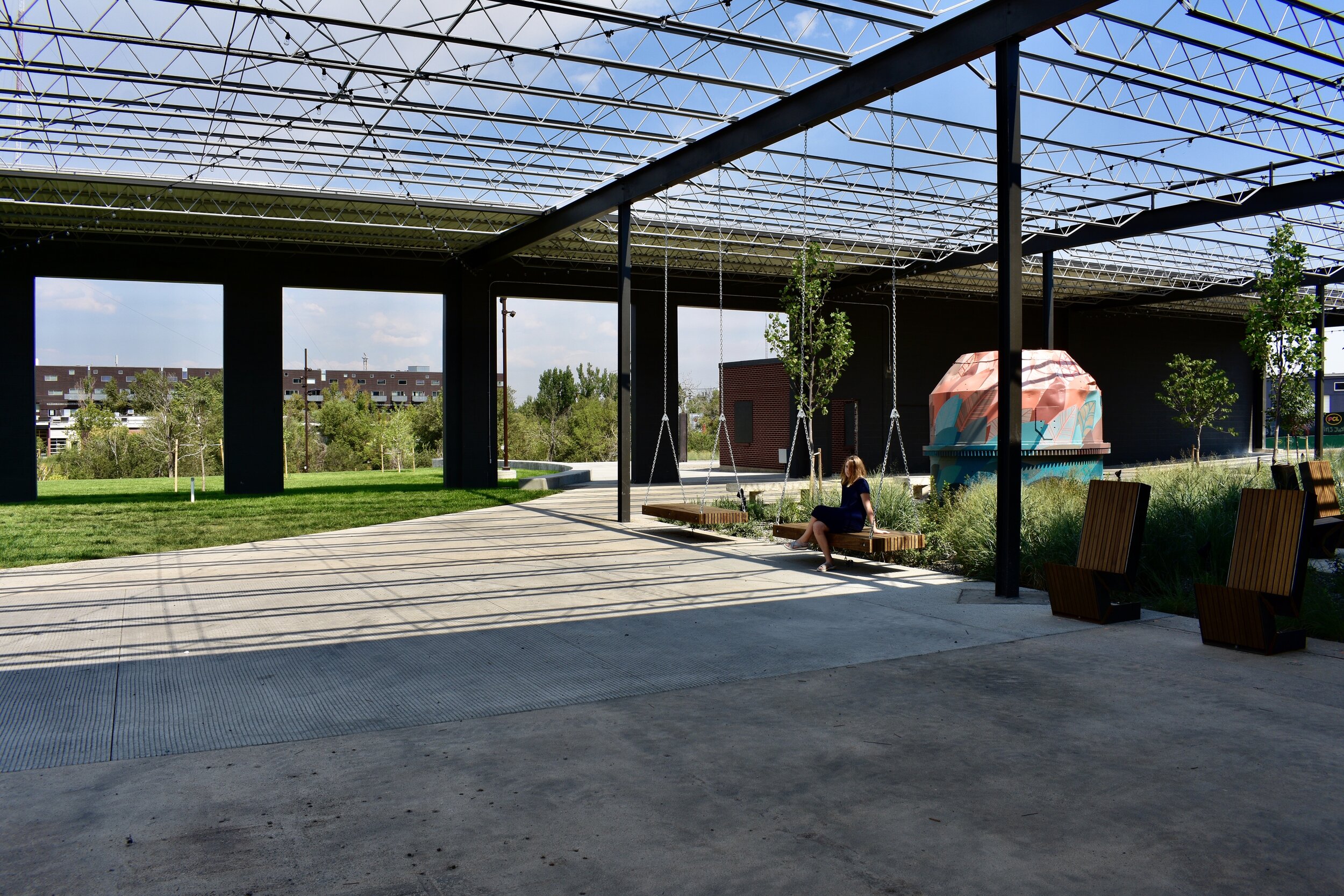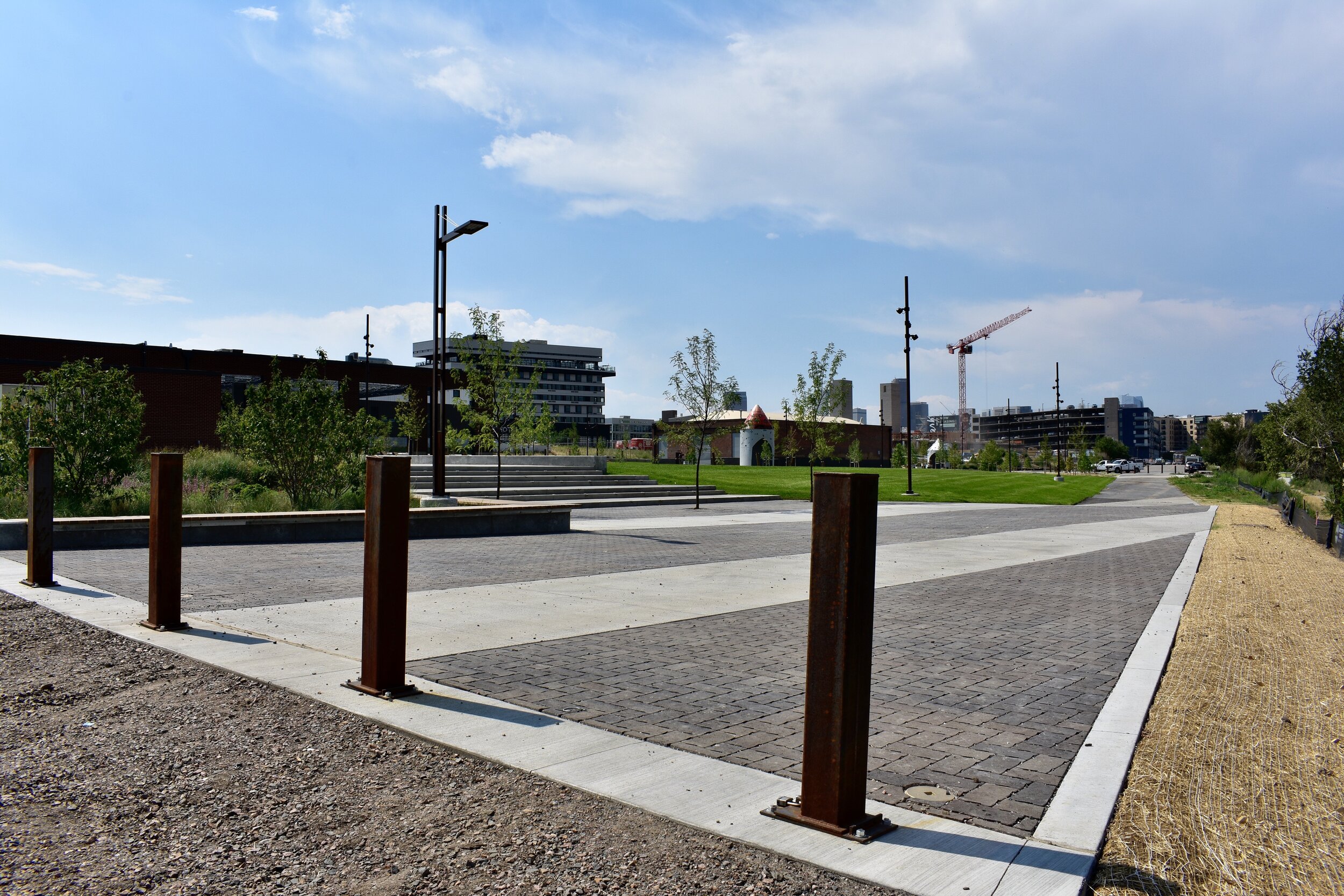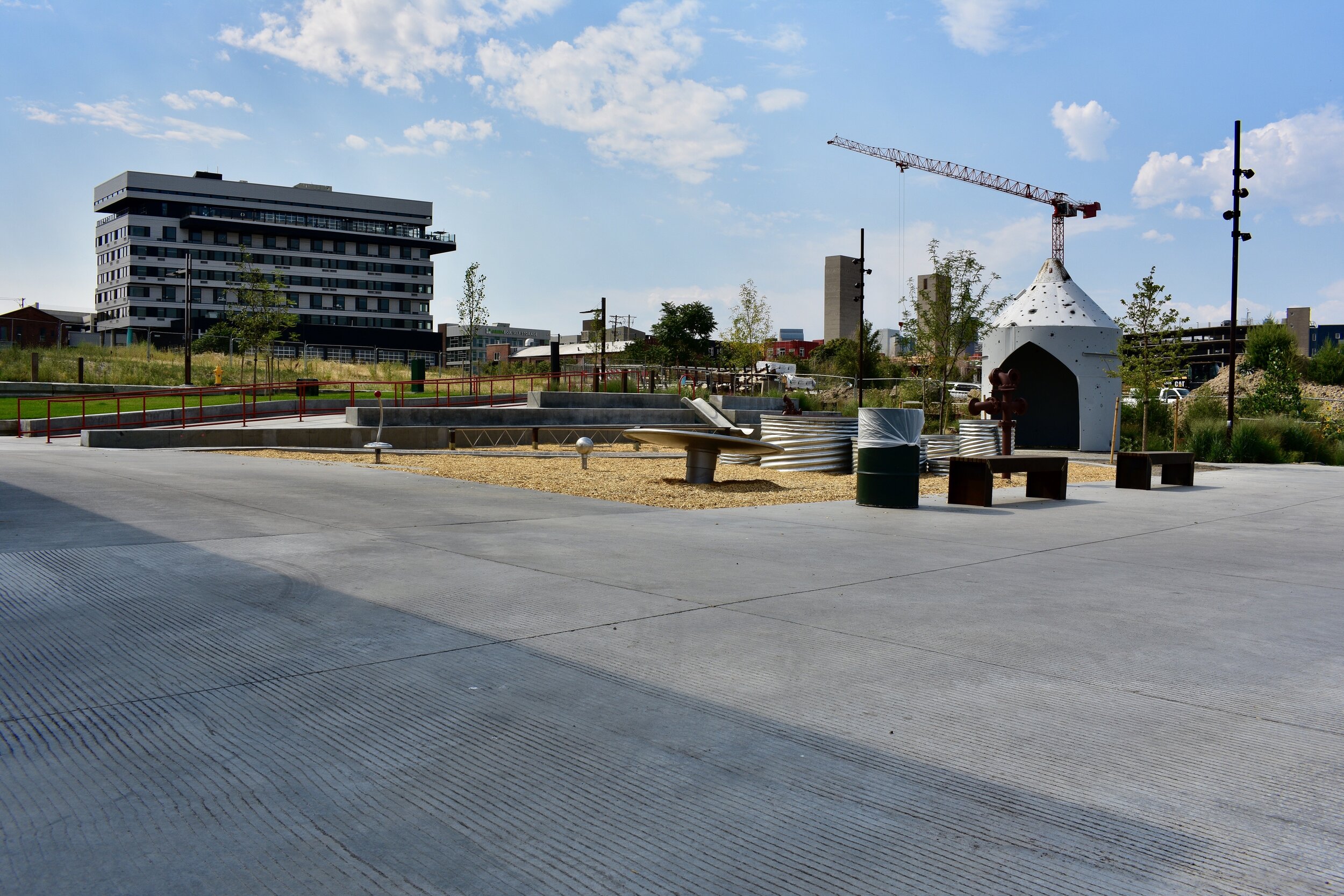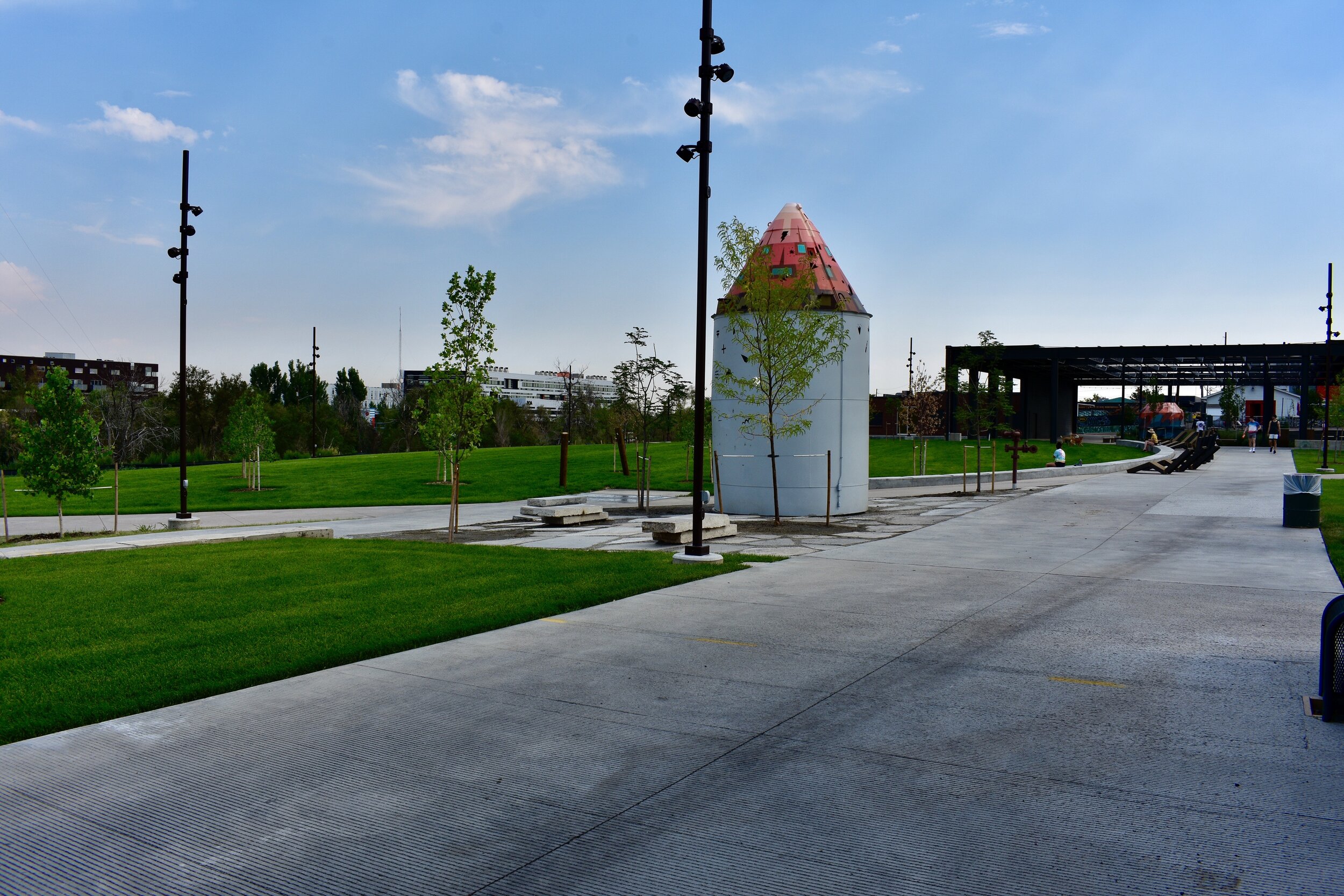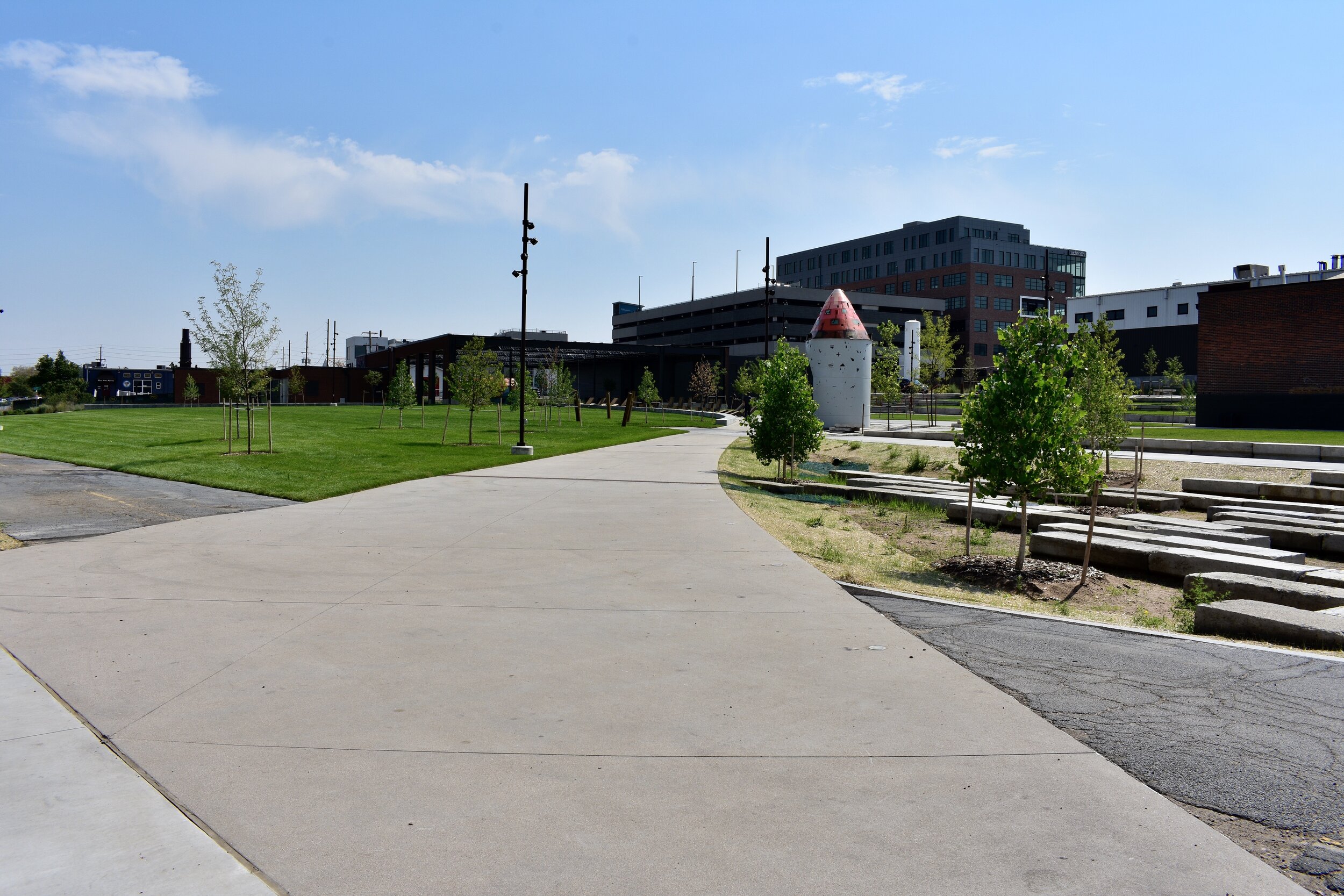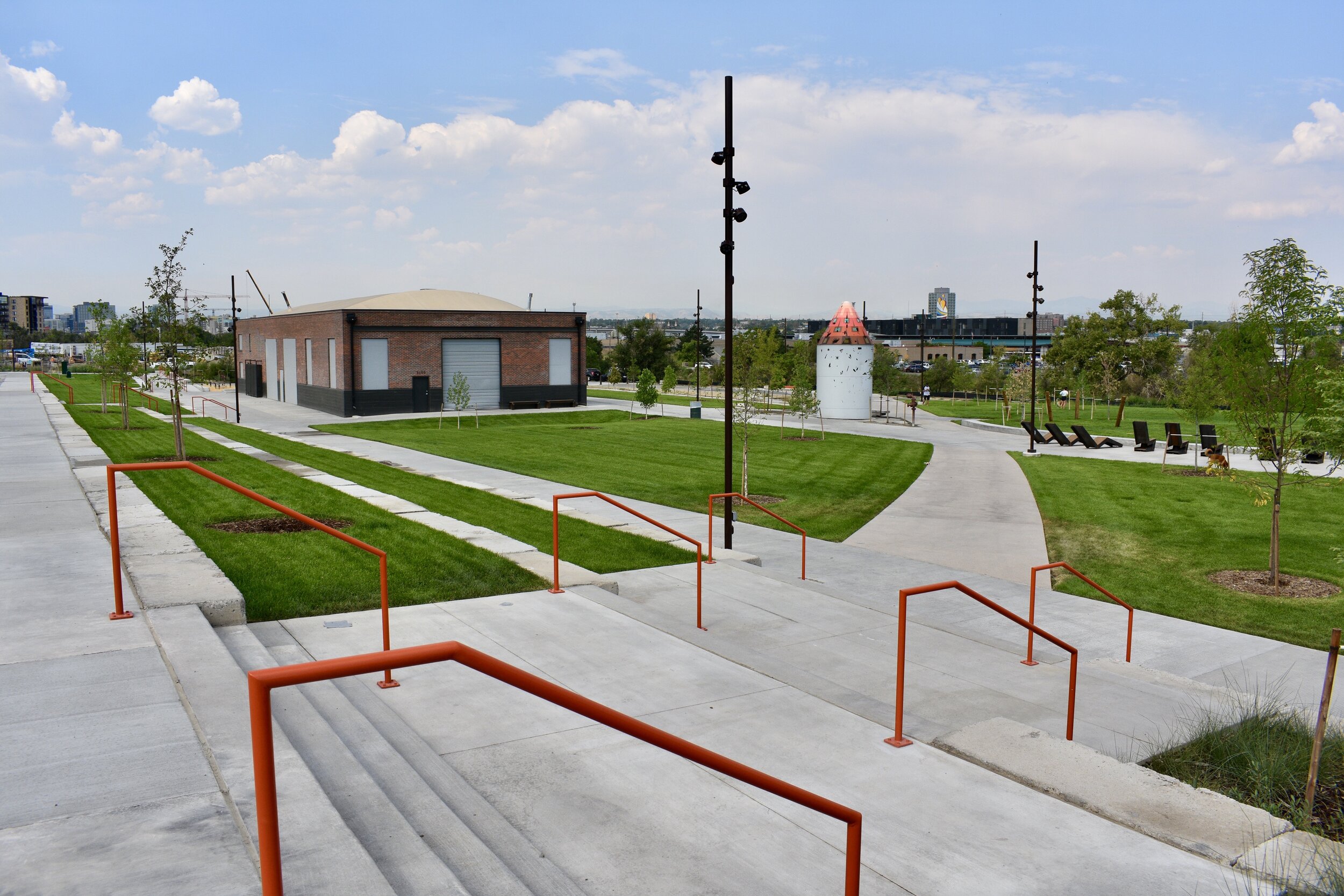Denver’s Five Points and River North Arts district buzzes with new life and growth. Development is blossoming all along Brighton Boulevard, from Downtown Denver all the way to the National Western Complex. It is an exciting time to be building in Denver. Part of the great transformation of that corridor is the land along the South Platter River. For far too long it has been a blighted part of town. Luckily, Denver has better visionaries than myself, and they saw the potential of breathing life into all aspects of that corridor. This year, RiNo Park emerged in 3.5 acres of land that was historically occupied by rail, warehouse and manufacturing industries. The City of Denver and Wenk and Associates saw the space as a great opportunity for growth for Denver Five Points and the Arts District. With a couple of old buildings sitting on the land and desolate land, it was time for a facelift. That’s when Iron Woman Construction and The Art of Concrete came on the scene to make the vision a reality.
The land that the new RiNo Park emerged from was neglected for quite some time. Because of that, it had been a refuge for some homeless as well as a haven for drug users to gather. Unfortunately with that, came a less than secure job site. The team was warned early on during a Preconstruction meeting that things will get stolen, and the thieves will use bolt cutters. After construction fences were cut, trailers were broken into and locks were busted, the team got wise to placing some heavy-duty shipping containers with anti-theft locks on them. Once the security of job supplies, equipment and materials was resolved, the team made great headway… and then CoVid19 hit. No one could have predicted the impact that this virus would make. Meetings suddenly went virtual, crews were spaced more apart, cleanliness because an even higher priority than before, and the support staff for all parties was reduced to working remotely – many while juggling the new realities of home-schooling and/or working from home. Some supplies got delayed, some crews got put on hold, COVid19 tried its best to slow this and many other projects down. However, the team at RiNo Park was very persistent, they communicated regularly and pushed through each challenge the virus threw at them one at a time.
What made this project successful and what helped it overcome the challenges that came with the virus and the less than ideal locations was the excellence in project execution and the team approach. The entire team met weekly. Before CoVid hit, it was mostly in-person meetings on-site with everyone involved. When CoVid hit, those calls turned to Zoom, but still happened regularly and aided in the success of the project. Even to the vary end, The Art of Concrete met on-site well after punch list items were complete to meet with Iron Woman and Denver one more time to walk the project and verify everything that was installed and to ensure all parties were taken care of properly and can all walk away from the job content that it was executed fairly and accurately.
The Art of Concrete is a newer company and one of the reasons they were brought on the project is because they are a MWBE, DBE and SBE Company, which helped fill the City’s goals for the project of small disadvantaged firm participation. But because of their infancy, they need to get creative on how to handle a sizable project with the limited resources they have. They are going into their third year of business, and with that they have a great team of people, however, they don’t have a full army of people. One thing they have learned this year is the power of flexibility with manpower.
Another area of innovation was the reuse of the concrete slab used in the new Maker’s Plaza. The existing building was partially exposed to open up into the park and create a welcoming plaza. Because the building foundation, walls and floors were in decent shape, the team recognized early on it would be wasteful to tear it all out only to replace it with new material. So, when it came to time address the concrete slab that had been interior for so long and it is now intended to be part of the exterior part of the park, the design team leaned on The Art of Concrete’s expertise on how to maintain the history and integrity of the slab but ensuring it was a safe surface for an exterior surface here in Colorado. Any sort of overlay or coating was instantly out because it would hide the beautifully aged slab that helps tell the story of the space. So it came down to texturizing the slab in a way that would provide enough traction in Colorado’s changing weather scenarios, while not altering the appearance dramatically or require much additional maintenance. With a serious of grinders and different techniques, the Art of Concrete’s team created enough of a profile on the concrete slab while maintaining the same general appearance of the slab. Anyone who walked the project today wouldn’t think twice about the slab being any different than the one that was there through the entire history of the rest of the building. It was executed perfectly.
The buildings add to the charm of the space, but were not part of the original plans. Initially they were going to tear the buildings down, but the community asked to keep them, so the City listened and integrated them into the design of the park. The buildings will house local artist studios, a library, a restaurant and a makers space. One of the buildings was opened up as part of the park. The Art of Concrete exposed the concrete floor, made it suitable for an exterior surface, and now the interior building is now exterior complete with porch swing style benches, seating and recycled art pieces. Rather than tearing out the old and replacing it with new, the team redesigned the old to be incorporated with the new. The park cuts right through what once was an old police building and now connects the spaces beautifully.
The park itself is a contribution to the community. Mayor Michael Hancock stated, “Part of the whole 5 points concept and whole RiNo Vision, that we are creating a new destination for Denver and all people and that is a phenomenal opportunity.” The park is helping Denver to fulfill it’s goal to have a park within walking distance of ever Denver resident. The park breathes life into an area that desperately needed a green space. It is the first green space of its kind in an area that historically has been occupied by warehouses, rail and manufacturing industries. The playground and park features reused scraps from industrial neighbors and transformed them into art pieces. One of the goals of this park was to be a community hub and connect people to the outdoors and open spaces, and it does that and makes the City of Denver more beautiful. Happy Haynes, the Executive Director of Denver Parks and Rec said, “This whole corridor along I-70 and in this industrial area was a forgotten place, and with this park it is going to be a destination”, and as Mayor Michael Hancock recognized in the parks ribbon cutting ceremony: “This is a project for the people”.



